Anonymous GitLab Ticketing: An Exciting New Project at Tor

Hi! My name is Maria Violante, and I’m one of two Outreachy interns for Tor Project for Winter 2020/2021. I’m thrilled to share with you the results of my internship thus far: the Anonymous Ticket Portal, which allows individuals to submit instant, anonymous tickets to participate in GitLab repos without signing up for a GitLab account or disclosing any personal data.
Keep reading to find out how you can participate in and benefit from the Anonymous Ticket Portal!
Why Anonymous Ticketing?
Currently, before making a bug report to one of Tor’s repos, users must sign up for a GitLab account via the anonticket.torproject.org service. Although this is the right approach for many users, it has its limitations:
- It’s overkill for the occasional or one-time bug reporter.
- The delay between requesting a GitLab account and approval by a moderator means bug reports are lost, as people may not return to submit their bug or remember the circumstances that provoked the bug in the first place.
- Many privacy-focused Tor users don’t feel comfortable providing their email for a bug report.
This anonymous ticketing portal is designed to circumvent these limitations, resulting in more complete, private bug reporting, and includes the following features:
Lightning-fast, Anonymous (and Lazy) User Interface
Instead of username and password, the Anonymous Ticket Portal's authentication system mirrors Freedom of the Press Foundation's Secure Drop (https://securedrop.org/), in that potential bug reporters receive a code phrase of six random words from the EFF’s New Wordlists for Random Passphrases. (https://www.eff.org/deeplinks/2016/07/new-wordlists-random-passphrases)
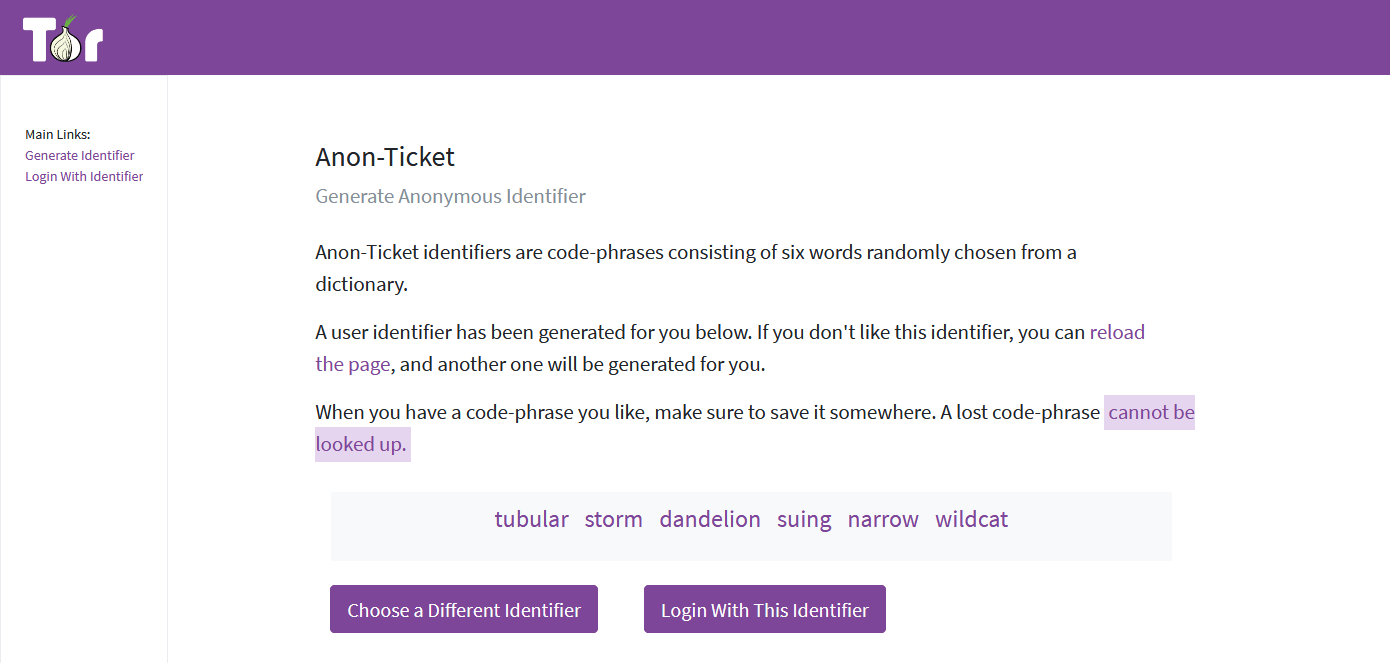
Once the user approves their code phrase, they are redirected to a bookmarkable landing page that allows them to browse and search projects and issues or instantly create their first issue/note using GitLab Flavored Markdown (https://docs.gitlab.com/ee/user/markdown.html)
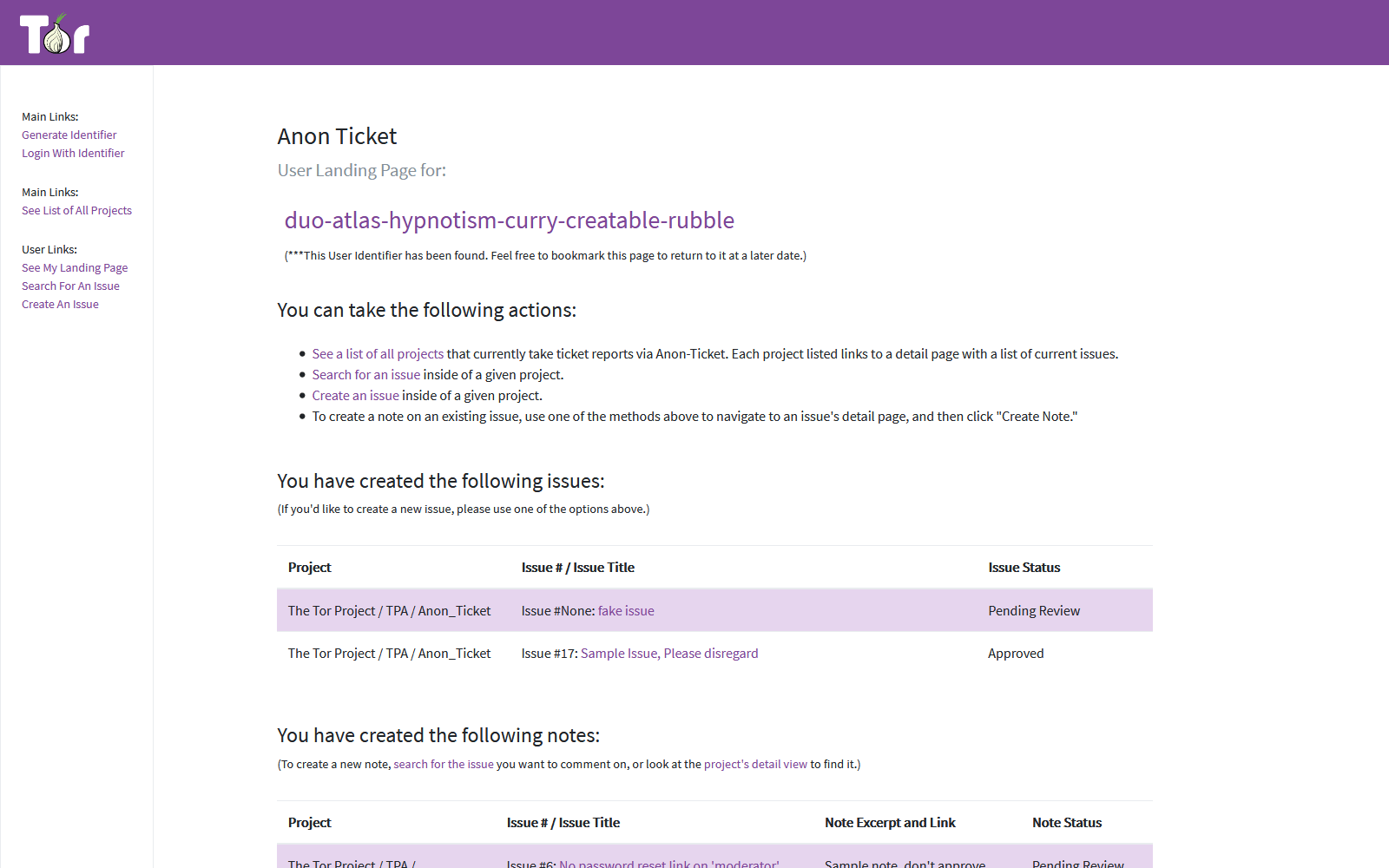
As they navigate through the system, their user identifier code phrase is passed forward via an arg/kwarg in the URL, which is checked against an authenticator that determines it meets all the parameters for a user identifier (e.g., approved words only, right number of words, etc.).
Once a contribution is made, it’s saved in the database for moderation. Users can return to their landing page at any time, either via bookmark or by manually entering their code-phrase into a ‘login’ screen, and make new contributions or check the status of their pending items.

Tor-Flavored, Data-Packed, Familiar Project and Issue Views:
Project and issue templates are laid out to mirror a repo’s gitlab instance for a more familiar user experience, and styled via Bootstrap and the Tor Project Styleguide’s CSS files (https://styleguide.torproject.org/) to maintain a strong visual identity and build user trust. Additionally, views display a project or issue’s GitLab milestones, labels, and notes, as well as a link directly to the relevant listing on GitLab.

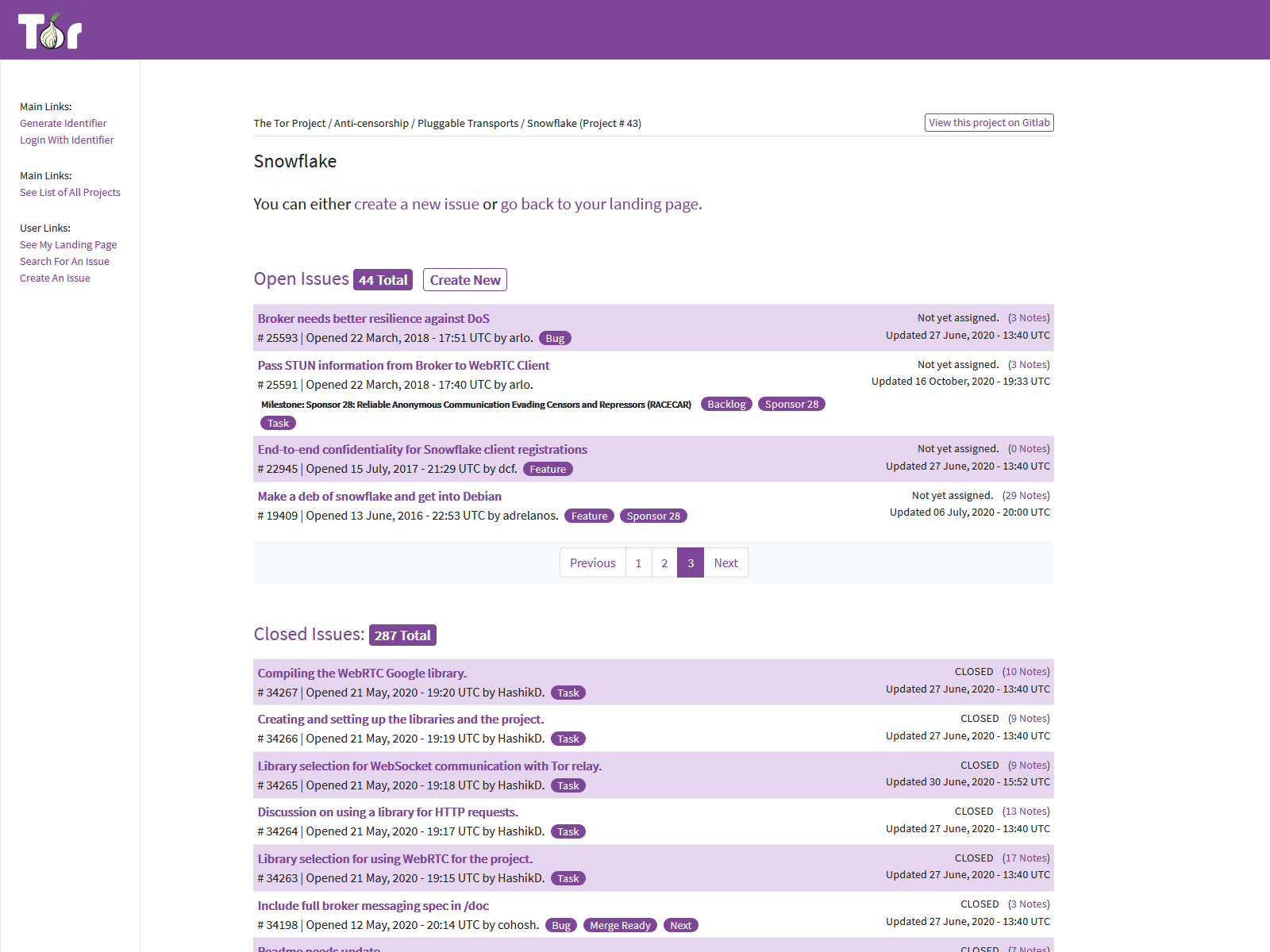
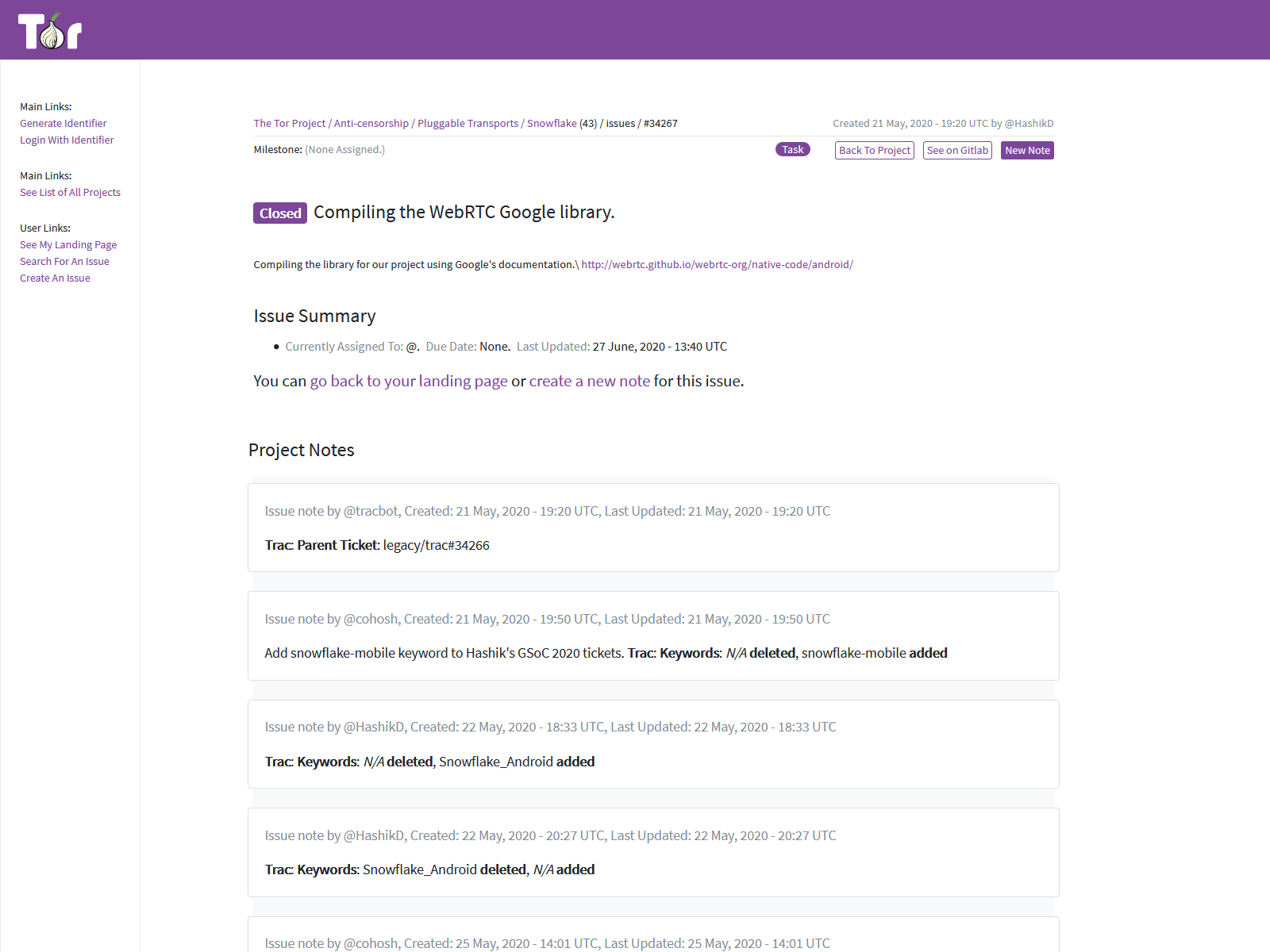
Feature-Rich Bulk Moderation:
The Anonymous Ticket Portal leverages Django’s robust User and Group system to manage Moderator permissions.
Logged-in moderators have access to a feature-rich view that includes project/issue details, creation timestamps, linked User Identifier code phrases, and the option to bulk approve or reject a theoretically unlimited number of pending items at once.
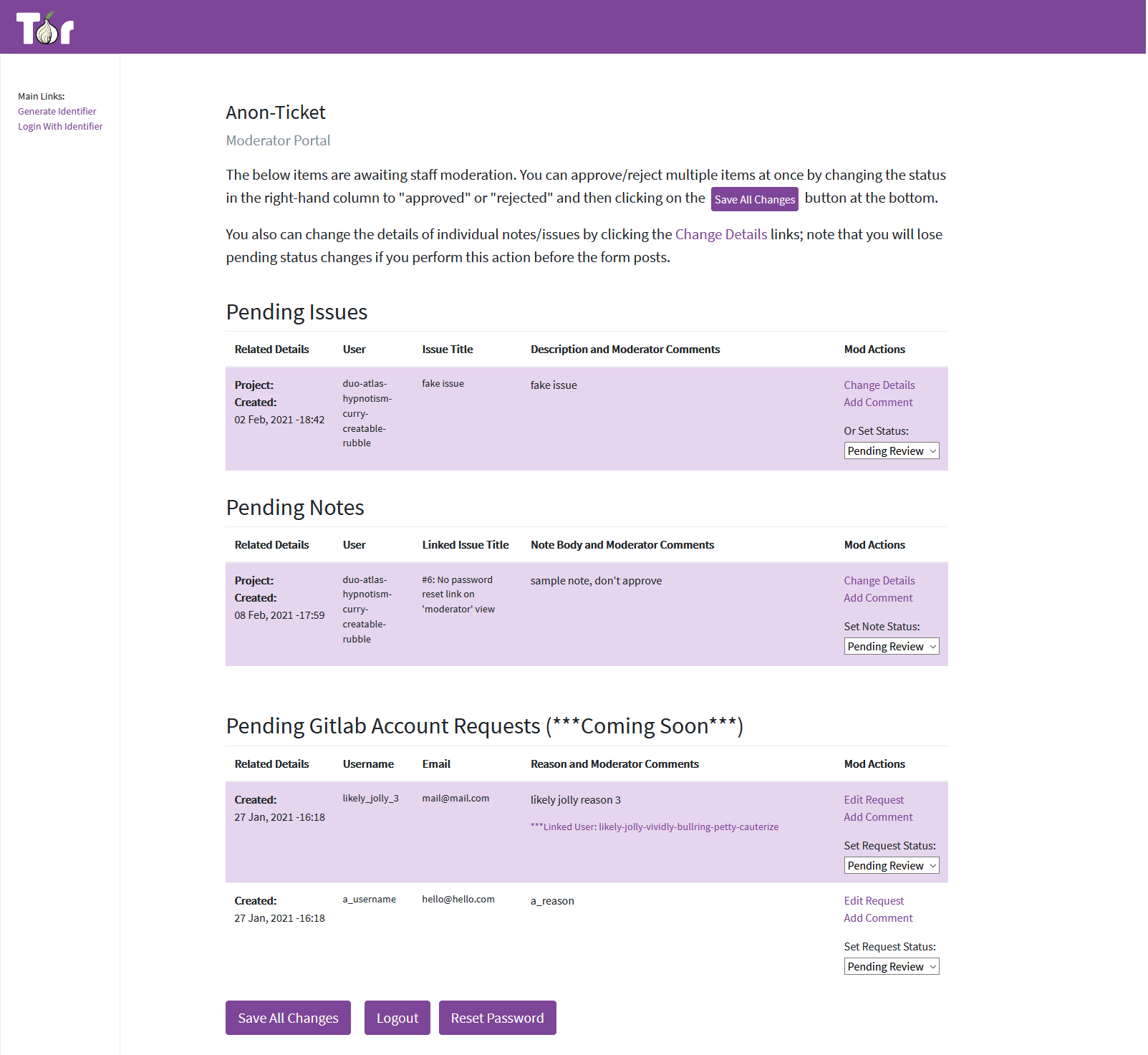
Additionally, each object has an “update view,” allowing moderators to tweak descriptions/content as necessary (e.g., for errors or unclear language), and add moderator-only comments that cannot be viewed by the user.

Super-Powered SuperUser
By leveraging the python-gitlab package and custom save definitions, a new project can be added to the Anonymous Ticket Portal using only a single piece of data--the project’s valid GitLab ID number. All details about the project (such as description, web url, name, groups, and namespace) are instantly fetched from GitLab upon project save--and can be updated by simply resaving the project.
Additionally, groups are created and updated programmatically via a custom BaseCommand on the command line, which increases consistency in both usage and with testing.
Try It Out!
A test instance of this project is currently live at https://anonticket.torproject.org/, or you can see the repo itself at https://gitlab.torproject.org/tpo/tpa/anon_ticket.
The following repos are currently set up to take anonymous issue reporting through the Anonymous Ticket Portal:
- The Tor Project / Core / Tor
- The Tor Project / Applications / Tor Browser
- The Tor Project / Anti-censorship / Pluggable Transports / Snowflake
- The Tor Project / Anti-censorship / Pluggable Transports / Snowflake WebExtension
- George Kadianakis / onionbalance
- The Tor Project / TPA / Anonymous Ticket Portal (This repo!)
Additionally, we are currently looking for volunteers to add their Tor GitLab repo as a test project for the Anonymous Ticket Portal and try out being a moderator. If you are part of the mailing list that received an email about this project, please consider volunteering your repo; your feedback will allow us to make this project as effective and user-friendly as possible for Tor users, developers, and moderators.
You can also (and are highly encouraged to) submit issues and notes on the project itself to GitLab via the the Anonymous Ticket Portal (https://anonticket.torproject.org/).
Planned Improvements
We have a number of planned features rolling out over the next few weeks, including:
- Launching as an onion service.
- The ability to create GitLab account requests with the intention of eventually replacing the TicketLobby. Users will be able to link their GitLab account request to their user identifier if they want the ability to check the status of their request in the web portal (thus lowering demands on moderators), but will also be able to create GitLab Account Requests without being logged in to the Anonymous Ticket Portal system.
- Additional security features, such as improved rate-limiting, etc.
Comments
Comments are closed.